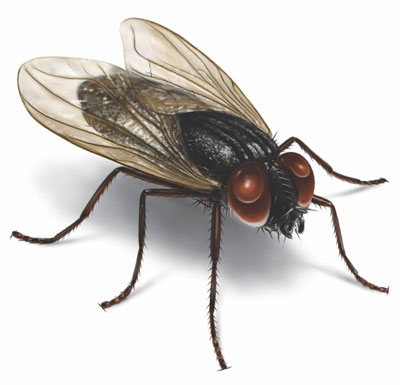
Spring is definitely on its way. My pink tulips have finished blooming, and the red ones are gorgeous. What shrubs that survived look well, but not splendid. Trees are another question. My oleander is as dead as a door nail, but it’s a Louisiana native, so what can I expect. I sat through a class at the Dallas Arboretum recently. We were encouraged to Be Patient.
However, during the last week, I noticed an increase in insects here in Hunt County. We can expect the deluge of tropical profusion of insect life in North Texas. It is an onslaught of flies, mosquitoes, lice, ticks, fleas, roaches and the deafening noise of katydid, crickets and locusts.
Other than mosquitoes which spread the massively endemic malaria and yellow fever, flies were and still are, the most bothersome and disease-ridden of the insects in the county. In both rural and urban areas (it was common practice for city dwellers to keep horses, cows, chickens and even hogs in their back yards) breeding grounds for the pesky flies abounded – such as privies (outhouses), pigsties, stables and kitchens. Garbage and trash were tossed haphazardly into the back yard in spite of sporadic efforts at discipline by enlightened health officials and physicians. Further, the lack of screening on windows and doors of many houses left families at the mercy of swarms of flies.
Various methods were used to combat the flies, some more effective than others, of course. Knowledgeable farmers and homeowners made sure that the barn, chicken coop, cattle pens and dairies were kept a considerable distance from the house. Smart farmers also kept the barns clean, and housewives knew to keep all food covered, their kitchens clean, and to store food in pie safes (wooden cabinets with metal doors that had small holes to allow the air to circulate but kept the flies out.)
Prior to air conditioning, restaurants and ice cream parlors and grocery stores had their share of troubles with flies. Although many of these stores had screen doors, they also relied on ceiling fans located just above the entrance door to create a wind barrier that prevented the flies from getting into the store (the downdraft breeze created by the fan made it difficult for the flies to maneuver.) As one old timer said, “The fans not only cooled the store but gave the flies a fit.”
Putting cotton balls on the screen doors discouraged flies from even approaching the house. Supposedly the flies thought the cotton balls were spider webs.
A 1921 Hunt County newspaper ran an article, titled “Swat the Fly.” “Ninety percent of house flies are hatched in stable manure. The manure should be thrown into boxes which should be kept screened or disinfected. Nine-tenths of the fly trouble could be disposed of by fly traps and swatters. Banish flies and you get rid of typhoid fever and the intestinal diseases that cause the death of so many children every summer. It’s a pretty bad citizen who won’t buy screens and disinfectants to save the lives of babies.”
Flies still plague Hunt County today, but screens, sanitation and fly spray keep them under control. What also helps also lures people indoors are television, computers, video games and other activities outside.
